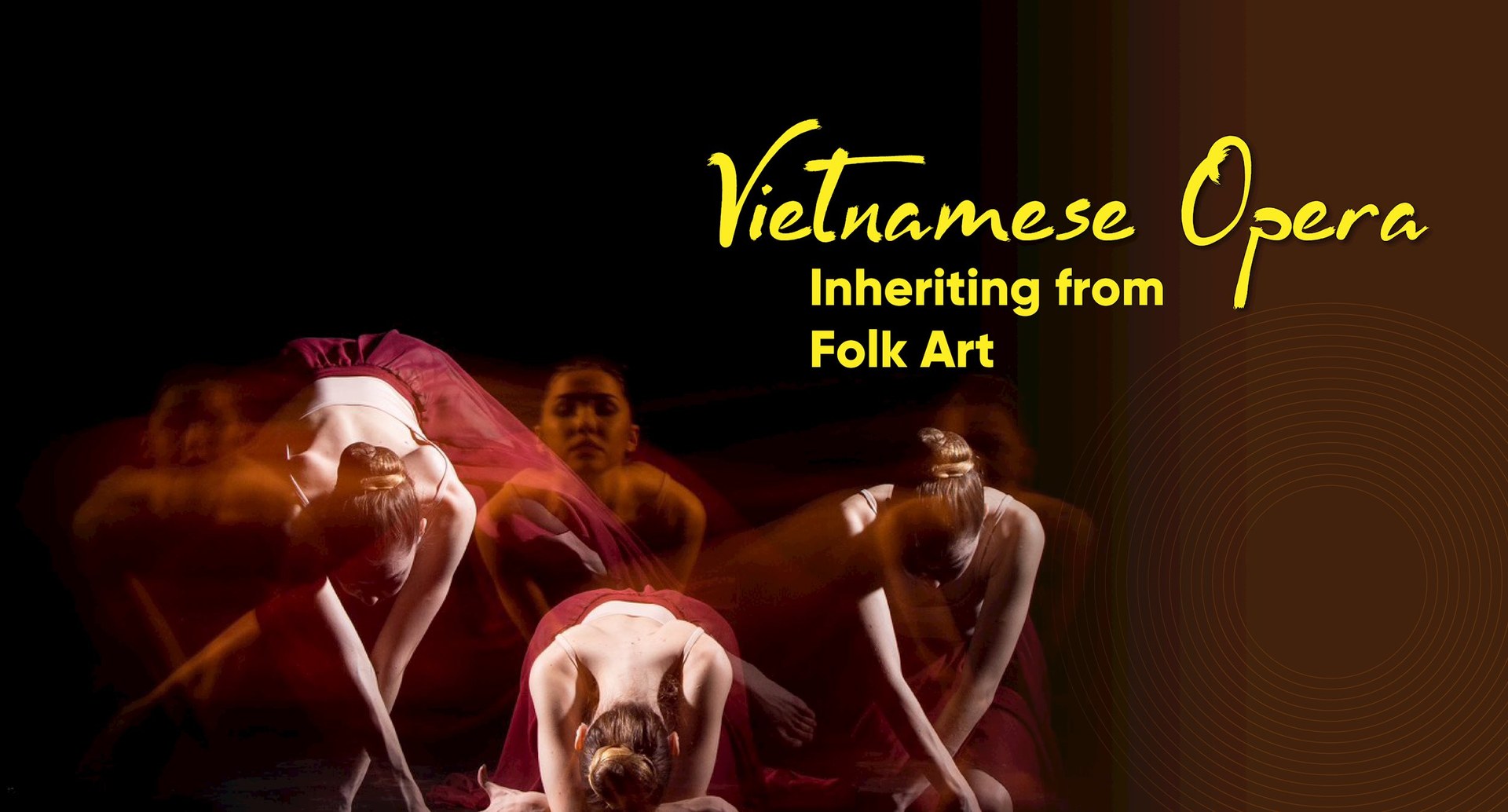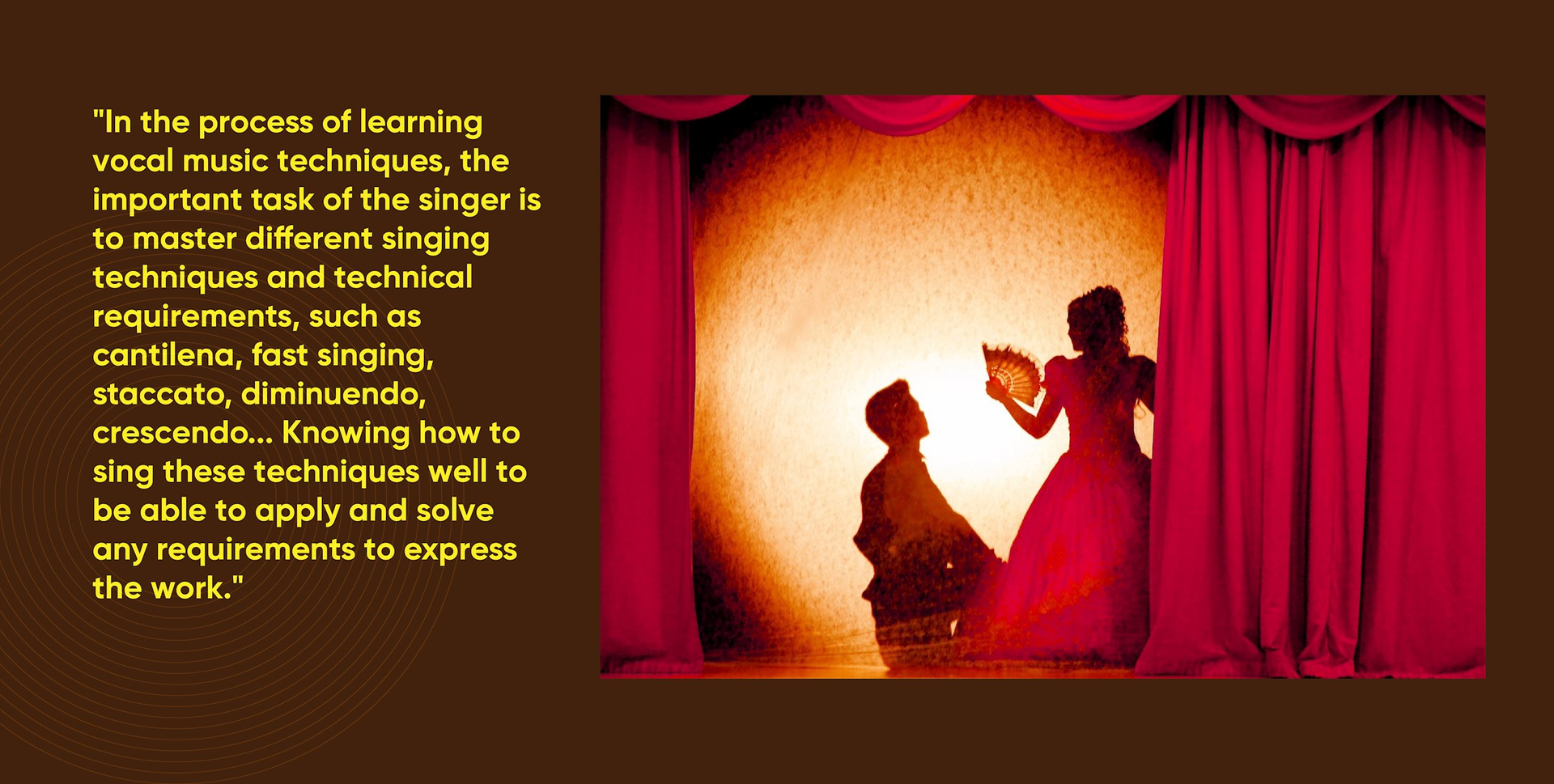Vietnamese Opera - embracing the artistic values of the world
English - Ngày đăng : 15:40, 14/06/2023



Typically, an opera has a structure of acts, scenes, and interludes. For operas that use an act structure, each act usually has several scenes (usually three acts in one performance). Some operas use a scene and interlude structure. The smallest complete unit in an opera is the movement. In one act, scene, or interlude, there are many movements (vocal or instrumental), such as:
"Co Sao" opera has a structure of three acts consisting of 29 movements.
"Nguyen Trai o Dong Quan" opera has a structure of three interludes and three scenes consisting of 27 movements.
"Nguoi giu Con" opera has a structure of five scenes consisting of 19 movements.
"La do" opera has a structure of two interludes and six scenes consisting of 36 movements.

Opera can be considered the largest and highest form of vocal music, a never-ending source of creative inspiration for professional singers. Hence, there are many types of vocal music and many forms of music involved in an opera, such as aria, arioso, recitative, ballad, romance, song, duet, trio, quartet, and chorus. Aria - a complete artistic solo form of singing with orchestral accompaniment - is essential in all operas. This form is designed for solo artists with orchestral accompaniment. The nature of aria is to express many aspects of the character's actions, depict the character's inner world, reflect surrounding phenomena, emotional peaks... to help determine the "portrait" of the character.
For example, in the "Co Sao" opera, there are vocal movements such as one romance, six recitatives, three duets, three trios, six choruses... Meanwhile, the main character, Miss Sao, has five solo movements, including arias and songs that are evenly spread throughout the acts, scenes, and the entire performance.
In addition to the primary vocal movements, an opera also includes instrumental movements such as overtures (opening music), transitions, interludes, and dance music. Although not appearing as main roles on stage, they have the function of leading, supplementing, deepening, and developing the content of the play, which is managed by the accompanying orchestra.
Vietnamese musicians have created overtures in operas such as "Co Sao", "The Sculpture Maker," "Nguyen Trai o Dong Quan," "Ben bo K’rong Pa," "Nguoi giu Con", "La do", etc. Orchestral music accompanies dance scenes, such as the unique masked dance scene with complex dramatic situations and many emotional nuances of characters surrounding seven masks: joy, anger, love, hate, sadness, pleasure, desire (act 18b, scene 2, "Nguyen Trai o Dong Quan" opera). In another aspect, the orchestra has the function of leading and developing the play's content, such as the mountain god's storytelling movement: "Oh, Truong Son of ours, oh, red leaves of ours...burn, red leaves, burn..." (act 18, scene 3, "La do" opera).
.png)
Bel canto technique (beautiful singing): singing with full, resonant voice and round sound. Breath control and the "placement" of sound are two essential requirements for creating sound quality. This is a mandatory requirement for opera singers.
Other techniques such as cantilena, passage, staccato, trillo...

To achieve effective production of Vietnamese operas, it is necessary to link it with a professional training and rehearsal environment for different vocal types and performing artists who can showcase the highest form of vocal music in opera. This further emphasizes that learning, absorbing the world's music essence, also requires synchronization in areas such as composition, performance, and training... With learning and absorbing the world's music essence, Vietnamese composers have applied the main principles of classical European opera, from the structure of the performance to the construction of musical forms and vocals following regulations, requirements, techniques... to create unique Vietnamese operas that are modern but still retain their identity while promoting the traditional cultural values of the nation. All the elements of national music have been raised to an academic level, blending together to create effective stage performances that somewhat reflect the appearance of Vietnamese opera art, with a strong foundation and absorbing the world's cultural values, promoting the precious essence of Vietnamese folk music. From these achievements, we can expect a progressive, culturally rich Vietnamese opera art in the era of global cultural exchange and cooperation.
